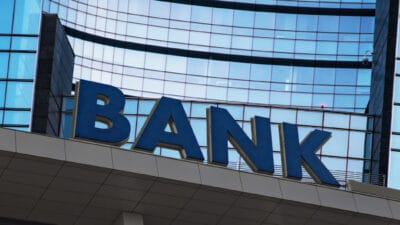ASX 200 banks have thwarted heavy losses in 2022 and surged more than 9% in the past month of trade.
The S&P/ASX 200 Financials Index (ASX: XFJ) has headed north after testing the 6,090 mark three times this year to date, now trading around three-month highs.
Yet, its been a mixed performance within the banking basket as some names have flourished whilst others have been left in the vault.

Banks bounce back in March
Aussie banks powered back home last month and secured strong gains as a group. Within the banking majors, Macquarie Group Ltd (ASX: MQG) has led the way, most notably due to its diversified portfolio that includes heavy exposure to commodities and financial markets.
Meanwhile, Commonwealth Bank of Australia (ASX: CBA) has popped 9.5% in the past month, followed by National Australia Bank Ltd (ASX: NAB).
At the other end, Suncorp Group Ltd (ASX: SUN) trembled in March and eventually began to stumble downwards to close out the month.
Banks, in particular, have been impacted by mounting inflationary pressures, saturation in the mortgage market, insurance cost blowouts, and a profitless interest rate regime that now looks set to change – hard and fast.
But that hasn't stopped ASX 200 banks posting record earnings, beefed-up dividends, and authorising juicy buyback programs for the coming periods.
Bloomberg Intelligence analyst Matt Ingram noted that Aussie banks might extend gains on the back of these capital management initiatives.
"Bank payout targets of 65-80% remain below the 10-year average, with lenders preferring buybacks to reduce excess capital," he wrote in a recent note.
"Longer-term DPS [dividend per share] growth could get a boost from lower share counts through buybacks," he added.
The shift in interest rates appears to be the bedrock of the latest surge, spurring a similar shift in mortgage lending and banking to businesses, according to analysts at JP Morgan.
"We are upbeat on future growth and return prospects for Australian SME [small-medium enterprise] banking driven by: 1) strong credit growth/likely resilience to rate hikes; 2) stable near-term NIM [net interest margin] outlook; 3) favourable capital rule changes; and 4) attractive ROE [return on equity] and industry structure," the broker said in a note.
"We view SME Banking industry structure very favourably. Scale is very difficult to build in SME and barriers to entry are high," it added.
Whilst competition in the segment is dense, "it is still much less so than in retail banking", analysts said. They noted that newer entrants – such as Judo Bank – are "niche players" that charge higher interest rates compared to the larger names.
What are the projections?
Analysts are bullish on the space and CBA gets a mention from several experts when analysing the data. Ingram noted that CBA's "18x P/E [price to earnings] ratio – atop its peer group – perhaps reflects its leading ESG rank among Australian and Asian financials".
Not only that, but the sector could extend gains if the push in returning capital to shareholders continues in 2022 and beyond.
"Australian banks' stock rallies may continue due to buybacks, which added 2-3 percentage points to their forward yields, lifting spreads above the risk-free rate to 5-8%," Ingram added.
That's "well above the past decade's average".
Westpac Banking Corporation (ASX: WBC)'s $3.5 billion buyback, for example, "puts it top of the list by this metric with a near 10% yield, while the sector as a whole is on average 40% cheaper than the 2012-22 mean."
Meanwhile, NAB is the "largest SME bank by some distance", according to JP Morgan analysts.
"SME business loans account for 24% of NAB's lending book (versus 15-17% for the other majors)…Business Banking divisions account for approximately 15% to 41% of group NPAT [net profit after tax]," they say.
Elsewhere, CBA's loan growth in business banking divisions was around 10% annualised in the last half, in line with NAB's.
These trends are set to continue with CBA joining NAB as a likely performer in JP Morgan's eyes.
"We see these trends persisting in the near term, with a virtuous cycle driven by investment prioritisation in these divisions, superior scale, and less distraction," the broker said.
NAB is JP Morgan's "top rank in [its] coverage", with the broker retaining its buy rating on a $33.50 price target.
Meanwhile, CBA is JP Morgan's "bottom pick on valuation grounds".









